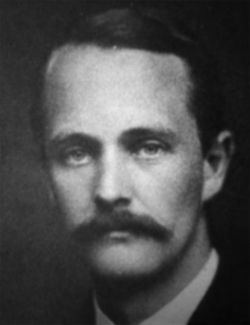The Text is taken from the same manuscript as the last. This manuscript is ascribed, from the style of handwriting, to the reign of Henry VI. The ballad is there written without division into stanzas in twenty-four long lines.
The Story.--The miraculous resuscitation of a roast fowl (generally a cock, as here), in confirmation of an incredible prophecy, is a tale found in nearly all European countries. Originally, we find, the miracle is connected with the Passion, not the Nativity. See the Carnal and the Crane.
An interpolation in a late Greek MS. of the apocryphal Gospel of Nicodemus relates that Judas, having failed to induce the Jews to take back the thirty pieces of silver, went home to hang himself, and found his wife roasting a cock. On his demand for a rope to hang himself, she asked why he intended to do so; and he told her he had betrayed his master Jesus to evil men, who would kill him; yet he would rise again on the third day. His wife was incredulous, and said, 'Sooner shall this cock, roasting over the coals, crow again'; whereat the cock napped his wings and crew thrice. And Judas, confirmed in the truth, straightway made a noose in the rope, and hanged himself.
Thence the miracle-tale spread over Europe. In a Spanish version not only the cock crows, but his partner the hen lays an egg, in asseveration of the truth. The tale is generally connected with the legend of the Pilgrims of St. James; so in French, Spanish, Dutch, Wendish, and Breton ballads.
In 1701 there was printed in London a broadside sheet of carols, headed with a woodcut of the Nativity, by the side of which is printed: 'A religious man, inventing the conceits of both birds and beasts drawn in the picture of our Saviour's birth, doth thus express them:-- The cock croweth Christus natus est, Christ is born. The raven asked Quando? When? The crow replied Hac nocte, This night. The ox cryeth out Ubi? Ubi? Where? where? The sheep bleated out Bethlehem' (Hone's Every-day Book).
SAINT STEPHEN AND KING HEROD
1.
Seynt Stevene was a clerk
in kyng Herowdes halle,
And servyd him of bred and cloth,
as every kyng befalle.
2.
Stevyn out of kechoun cam
wyth boris hed on honde,
He saw a sterre was fayr and brycht
over Bedlem stonde.
3.
He kyst adoun the bores hed,
and went in to the halle;
'I forsak the, kyng Herowdes,
and thi werkes alle.
4.
'I forsak the, kyng Herowdes,
and thi werkes alle,
Ther is a chyld in Bedlem born
is beter than we alle.'
5.
'Quat eylyt the, Stevene?
quat is the befalle?
Lakkyt the eyther mete or drynk
in kyng Herodwes halle?'
6.
'Lakit me neyther mete ne drynk
in king Herowdes halle;
There is a chyld in Bedlem born,
is beter than we alle.'
7.
'Quat eylyt the, Stevyn? art thou wod?
or thou gynnyst to brede?
Lakkyt the eyther gold or fe,
or ony ryche wede?'
8.
'Lakyt me neyther gold ne fe,
ne non ryche wede;
Ther is a chyld in Bedlem born,
schal helpyn us at our nede.'
9.
'That is al so soth, Stevyn,
al so soth i-wys,
As this capoun crowe schal
that lyth here in myn dysh.'
10.
That word was not so sone seyd,
that word in that halle,
The capoun crew Cristus natus est!
among the lordes alle.
11.
'Rysyt up, myn turmentowres,
be to and al be on,
And ledit Stevyn out of this town
and stonit him with ston.'
12.
Tokyn he Stevene,
and stonyd hym in the way;
And therfore is his evyn
on Crystes owyn day.
Saint Stephen And King Herod
Frank Sidgwick
Suggested Poems
Explore a curated selection of verses that share themes, styles, and emotional resonance with the poem you've just read.
